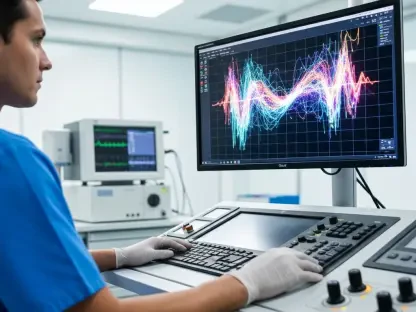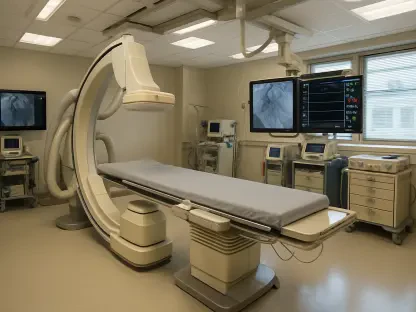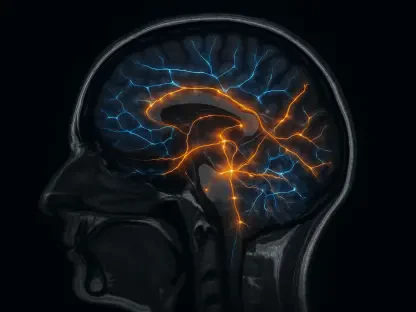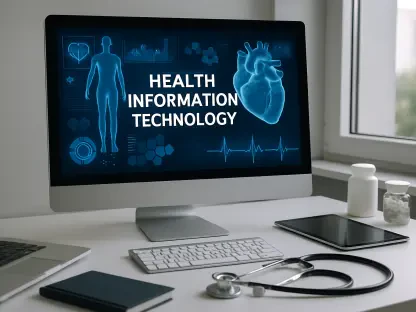The transformative impact of the Medical Internet of Things (MIoT) on modern healthcare systems is poised to address many of the sector’s pressing challenges. As the aging population and shortage of trained professionals strain healthcare services, technology like MIoT emerges as a potential solution to mitigate these pressures. Through enhancing interconnectivity and enabling remote monitoring, MIoT can optimize medical environments, streamline workflows, and ultimately enhance patient outcomes. The aging population and shortage of trained professionals in healthcare systems have led to stretched services and overburdened medical staff, contributing to increased stress and burnout.
The Current Healthcare Landscape
Global factors such as the aging population and a shortage of trained professionals are placing increasing pressure on healthcare systems. As these issues persist, the need for innovative solutions becomes more critical. Medical staff are often stretched thin, managing heavy workloads that lead to significant stress and burnout. This not only affects their well-being but also compromises the quality of patient care. The complexity of patient needs continually evolves, pressuring healthcare providers to deliver more personalized and effective treatments with limited resources. These strains are compounded by advancements in medical technology, which have elevated patient expectations and increased the demand for high-quality, individualized care.
As patient expectations rise, so too does the requirement for more advanced and personalized medical services. While beneficial, personalized care demands substantial time and resources from healthcare providers, further straining budgets and operational capacities. Additionally, dealing with complex administrative tasks and maintaining up-to-date knowledge on the latest medical advancements adds to the burden on healthcare professionals. Efficiently balancing the technological advancements with the limited availability of skilled professionals remains a central challenge that healthcare systems must address to improve the overall delivery of care.
Advantages of MIoT Adoption
MIoT offers a promising solution to the healthcare sector’s most pressing challenges through enhanced interconnectivity. Intelligent devices integrated into medical environments have the potential to significantly improve efficiency and accuracy in healthcare delivery. By enabling remote patient monitoring and reducing the need for frequent hospital visits, MIoT devices can alleviate the strain on healthcare facilities and provide patients with more convenient care options. For instance, wearable devices equipped with sensors can continuously monitor vital signs and transmit data in real-time, allowing healthcare providers to track patients’ health remotely and intervene when necessary.
On-site MIoT devices also play a vital role in automating routine tasks, thereby freeing up healthcare professionals to focus on critical patient care. This automation enhances workflow efficiency, reduces the risk of human error, and ensures that medical staff can devote more time and attention to delivering personalized care. Patients benefit from this streamlined care process, as they can recover in the comfort of their homes while still receiving comprehensive medical support. MIoT enables a more patient-centered approach, where the accessibility of health data and remote monitoring capabilities improve patient outcomes and overall healthcare experience.
Market Potential and Growth
The market potential for MIoT is considerable and reflects the growing adoption of smart medical technologies. Projections suggest that the MIoT market will experience significant growth, with revenues expected to reach $83.8 billion by 2024 and potentially $134.4 billion by 2029. This rapid market expansion is driven by the increasing demand for efficient and effective healthcare solutions that can address the myriad challenges facing the industry. Despite this potential, the industry must navigate challenges such as security concerns and battery performance to fully realize the benefits of MIoT technologies. Ensuring the robustness and reliability of these devices is critical to their widespread adoption.
One of the key strategies to overcome these challenges is adopting new low-power technologies and enhancing security measures, such as implementing a zero-trust security model. Zero-trust security is essential for protecting sensitive medical data and maintaining patient trust. Additionally, technologies like RFID can play a pivotal role in healthcare settings by reducing waste and improving asset tracking. By integrating RFID solutions, healthcare organizations can efficiently manage medical supplies and equipment, ensuring that resources are utilized effectively, inventory is accurately tracked, and operational costs are minimized. Addressing these challenges is crucial for sustaining the growth of the MIoT market and realizing its full potential.
Real-Life Application of MIoT
To illustrate the transformative potential of MIoT, consider a scenario in which a patient uses a battery-powered wearable device equipped with sensors to monitor various health indicators such as heart rate, blood pressure, blood oxygen levels, and glucose levels. These critical data points are continuously monitored and transmitted wirelessly to a centralized system, utilizing communication protocols like Bluetooth, Wi-Fi, Zigbee, LoRaWAN, or Sigfox. The collected data undergoes comprehensive analysis through big data analytics, which can detect concerning patterns and trigger immediate alerts to healthcare professionals.
This seamless data transmission and analysis enable healthcare providers to receive actionable insights, allowing them to respond swiftly and appropriately to emerging health issues. The real-time monitoring capabilities of MIoT devices empower patients by providing them with the ability to manage their health proactively while still under the scrutiny of medical professionals. This approach not only enhances patient outcomes but also helps alleviate the burden on healthcare facilities by reducing the frequency of in-person visits, enabling a more efficient allocation of medical resources.
Technological Advancements
As MIoT technologies continue to evolve, advancements in power management and connectivity are paramount for maintaining effectiveness and reliability. Low-power wearable devices currently rely on traditional batteries like lithium-ion coin cells. However, the increasing complexity and functionality of MIoT wearables necessitate the exploration of new solutions to extend battery life. Innovations such as energy harvesting, which captures energy from the environment (e.g., solar, thermal, or kinetic energy), and wireless charging are being developed to support longer-lasting and more efficient wearable devices. These advancements in power management ensure that MIoT devices remain functional for extended periods, providing continuous health monitoring without frequent interruptions for battery replacements.
Connectivity improvements are also essential for ensuring the efficient delivery of healthcare services through MIoT. The development of Wi-Fi 7, for instance, represents a significant milestone in this regard. Wi-Fi 7 offers higher data rates, better latency, increased capacity, improved reliability, and greater range and coverage compared to previous Wi-Fi standards. These enhancements enable faster and more reliable communication between MIoT devices and centralized systems, which is crucial for real-time data transmission and analysis. As a result, healthcare providers can deliver timely and accurate patient care, further reinforcing the importance of ongoing technological advancements in MIoT.
Edge Intelligence and AI
The integration of edge computing and artificial intelligence (AI) is central to the advancement and optimization of MIoT solutions. Edge computing enables data processing to occur directly on MIoT devices or near the data source, reducing the reliance on cloud computing and minimizing latency. This approach allows real-world data to be used in real-time, providing immediate insights and enhancing decision-making processes. Machine learning models can be deployed directly on MIoT devices, enabling faster and more accurate diagnostics. For example, Edge Impulse’s technology offers the potential to revolutionize cancer detection at the edge, providing rapid and precise analysis that can outperform human capabilities in terms of speed and accuracy.
By harnessing the power of AI, healthcare providers can improve diagnostic accuracy, optimize treatment plans, and enhance patient outcomes. AI-driven MIoT devices can analyze vast amounts of health data, identifying patterns and anomalies that may go unnoticed by human observers. This heightened analytical capability empowers healthcare professionals to make more informed and timely decisions, ultimately improving the quality of care. As edge intelligence and AI continue to evolve, they will play an increasingly vital role in the effective deployment and utilization of MIoT solutions.
Cybersecurity Measures
The adoption of MIoT devices in healthcare settings necessitates robust cybersecurity measures to protect sensitive patient data and ensure overall safety. A study conducted in 2021 revealed that 82 percent of healthcare organizations using IoT devices had experienced IoT-related security breaches. Given the critical nature of medical information and the potential consequences of security breaches, regulatory bodies are continually tightening cybersecurity regulations. The European Union’s NIS2 Directive, for instance, mandates rigorous cybersecurity measures for medical products, ensuring that manufacturers implement security protocols to protect against potential threats.
Similar guidance is being adopted globally, including in the United States, Australia, and Singapore, underscoring the universal need for stringent cybersecurity in medical environments. Healthcare providers must adhere to these regulations and prioritize cybersecurity investments to safeguard patient data and maintain trust. Effective cybersecurity practices include regular system updates, comprehensive monitoring, and incorporating advanced security technologies to defend against cyber threats. By proactively addressing cybersecurity concerns, healthcare organizations can ensure that MIoT devices operate securely and efficiently, contributing to the overall success of MIoT adoption.
Embracing Zero Trust Security
Given the extensive vulnerabilities associated with thousands of connected devices within healthcare organizations, traditional perimeter-based security models are proving inadequate. To address this, the Cloud Security Alliance recommends adopting a zero-trust security approach. In a zero-trust architecture, every connection and event on the network is treated as potentially malicious unless explicitly verified otherwise. This approach significantly enhances the security posture of healthcare organizations by continuously monitoring and authenticating all network activities.
Although the zero-trust model does not eliminate risks entirely, it offers the most effective security framework for MIoT environments according to current standards. Implementing zero trust involves rigorous identity verification, access controls, and continuous monitoring to detect and respond to threats in real-time. By adopting this security paradigm, healthcare organizations can better protect sensitive patient data, prevent unauthorized access, and ensure the integrity of MIoT devices. The integration of zero-trust security is crucial for maintaining a secure and resilient healthcare infrastructure in the face of evolving cyber threats.
Effective Asset Management
As the number of connected devices in healthcare settings continues to grow, effective asset management becomes increasingly critical. MIoT devices are often deployed in decentralized locations, making it challenging to track and manage these assets efficiently. RFID asset management systems offer a practical solution by providing real-time visibility into the location and status of medical equipment and supplies. These systems enable healthcare organizations to accurately track inventories, reduce losses, and schedule maintenance effectively.
By leveraging RFID technology, healthcare providers can ensure that essential medical equipment is available when needed, minimizing disruptions to patient care. Additionally, effective asset management helps reduce operational costs by optimizing resource allocation and preventing the unnecessary purchase of replacement items. Implementing robust asset management practices enhances the overall efficiency and sustainability of healthcare organizations, ensuring that they can continue to deliver high-quality care in an increasingly complex and technology-driven environment.
Enhanced Patient Outcomes
The Medical Internet of Things (MIoT) is set to significantly disrupt and improve contemporary healthcare systems, addressing some of the field’s most pressing issues. With an increasing elderly population and a growing scarcity of trained professionals, healthcare services are becoming increasingly strained, leading to heightened stress and burnout among medical staff. MIoT introduces a technological answer to these challenges. By advancing interconnectivity between devices and facilitating remote patient monitoring, MIoT can optimize healthcare environments, streamline various workflows, and ultimately improve patient outcomes. Particularly in an era where healthcare demands continually outpace the supply of professionals, the integration of MIoT technologies presents a viable solution for enhancing efficiency and reducing the burden on medical staff. This shift not only promises to alleviate the pressures on healthcare workers but also ensures a higher standard of care for patients through continual monitoring and timely interventions.









